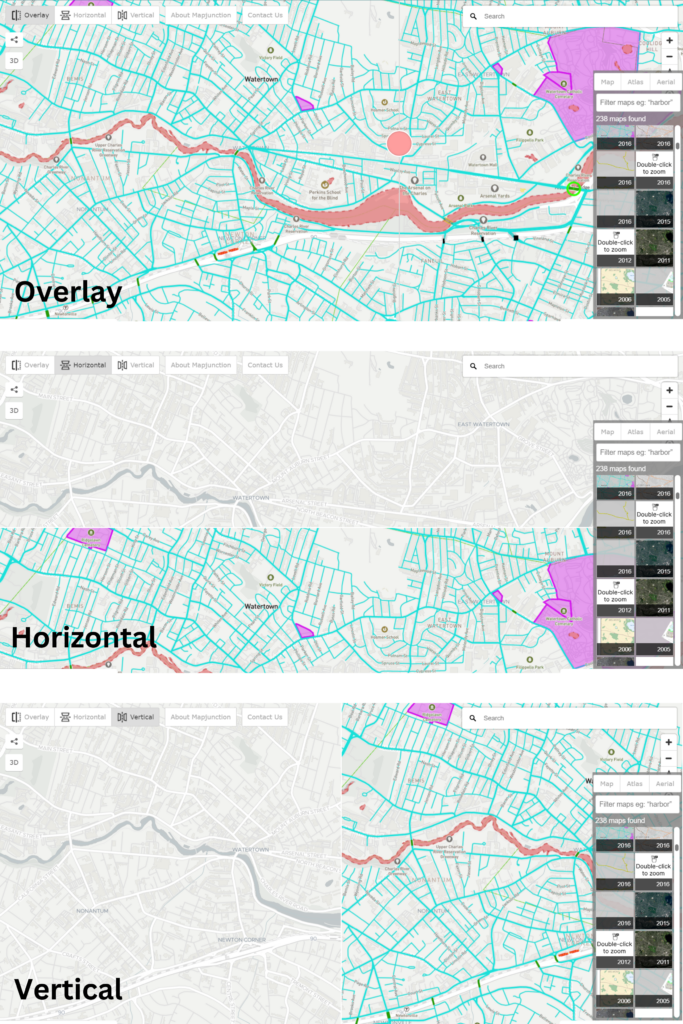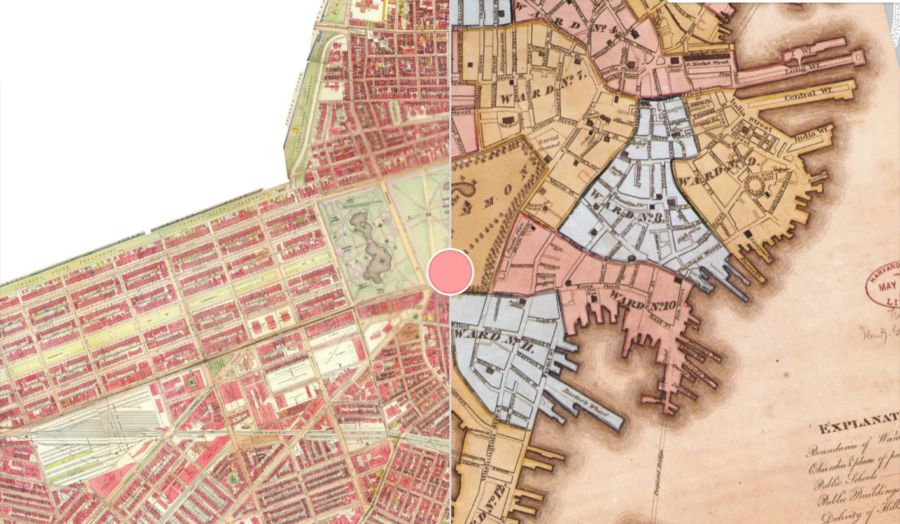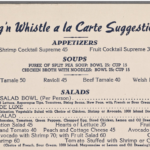As Bostonians we tend to forget the living history we exist and walk on every day. Luckily, our ancestors have left evidence and breadcrumbs of what once was. Our role as historians is to follow these breadcrumbs and piece together the evidence in such a way that connects the past to the present. When there is so much history and evidence, as there is in Boston, it can be a struggle for educators to condense this information and make it palatable for students. One of the best ways to do so is through maps. Maps provide us with the ability to visualize immense amounts of data quickly (Wiseman, 2015).

For Bostonian educators, much of this work has already been done by the tool Mapjunction. The idea for Mapjunction was born in 1999 when creator, William Warner, worked with the city of Boston to make a video for their Millennium Celebration that super-imposed 3D graphics of future buildings and structure on current images of the city. Warner was inspired by this project to make a tool that could overlay historic maps with current ones. From this inspiration came Mapjunction.
When the site is opened, its display is not immediately intuitive. The site’s designers seem to expect this response and have a pop-up tutorial that goes through the basic page navigation. At the top of the “About Mapjunction” page there is also an in-depth video tutorial to help users. While its navigation takes a moment to grasp, the layout of the main page is fairly simple. The user is able to choose from hundreds of base and overlay maps in order to compare them. The maps are organized by date and go back to the 17th century. There three different views to compare the maps: overlay, horizontal, and vertical. There are also 3D and Street View options on certain maps when zoomed in.

Mapjunction acts a reliable mapping tool for Boston educators or any educators teaching early American history. Similar to how Digital Harlem was able to show the true scope and span of the New York neighborhood in the 1920s through a geographic information system, Mapjunction’s mapping could be used to contextualize major events such the Boston Massacre or Boston Tea Party. If you are curious or looking for more ideas, the site’s About page links to several projects that have used the tool, including the history of how MIT came to Boston and the beginnings of the Allston Multimodal Project to shift the Mass Pike (which is still going through the government six years later).
The biggest tip I have for any educators wanting to use the tool in their future classrooms is to really sit down and spend time with it. As I have said the site is certainly not intuitive off the bat, but will likely only take a day, at most, to get comfortable with. If you are struggling, the site has multiple tutorials to help. Fortunately, there are no logins or subscriptions necessary to use the site so that is no barrier to entry. It is important as history educators we are teaching students to interpret all kinds of primary sources and do not forget maps in the process. We also need to continuously keep up with the emerging digital tools that can aid in that process. For those looking to begin this journey, mapping tools like Mapjunction are a fantastic place to start.
So, what do you guys think about mapping tools? Do you have any that are location specific for your area like Mapjunction? Let me know in the comments below!



Emma, I like that you included information about the history of the site. I didn’t end up checking that one out myself because I am not very familiar with the geography of Boston, so it was interesting to learn how it came about! It’s also very cool that the site has maps going back to the 17th century. This definitely seems like a great tool for educators, and I’m not familiar with any other specific mapping tools like this one but it would be great for more areas to have something similar.